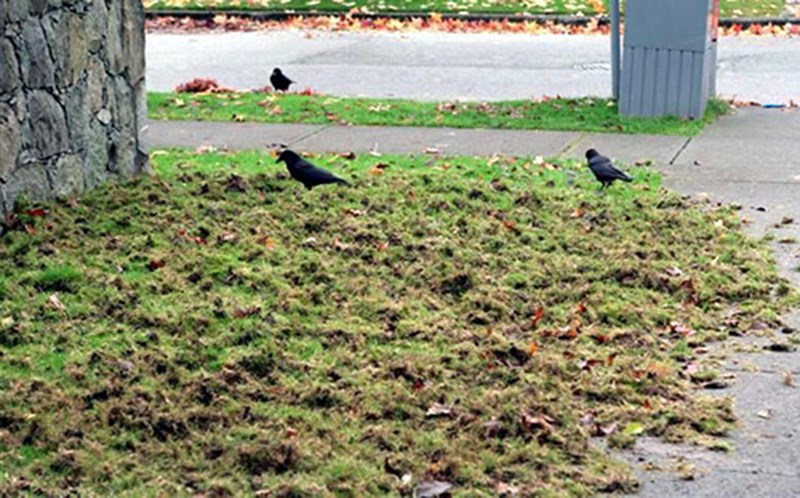It is still early fall but signs that chafer beetles are back — along with the animals that eat them — are already starting to show up on Tri-City lawns.
This summer’s heat wave sent chafer grubs deeper underground. With the cool, moist air returning recently, the insects are starting to move back to the surface again.
There, they’re a prime food source for birds, rodents, raccoons and skunks.
“We are already starting to hear reports of lawns being damaged by animals, such as crows, skunks and raccoons that feed on the grubs,” said Steffanie Warriner, the city of Coquitlam’s manager of environmental services. “The best line of defence throughout the fall is to maintain a healthy lawn.”
This time of year, that means having a lawn that is about six centimetres in length; it is also important to leave the clippings on the lawn after it has been mowed. An organic fertilizer or a slow-release synthetic fertilizer can also be beneficial.
Warriner added that it is still unclear what impact the drought has had on the chafer beetle population. She noted that when the temperatures rise, the insects head deeper underground, where the soil is moist.
Port Coquitlam, Port Moody and Coquitlam had made attempts to help residents battle the beetle with nematode treatments, offering lawn watering exemptions during the stage 2 watering restrictions. But as the hot summer dragged on, a stage 3 water ban was put in place during August and July — the most optimal time for nematode treatments — and the exemptions had to be scrapped.
“If residents who previously purchased nematodes were unable to use them during the summer and are wondering what to do with any leftover supply, they may want to consider applying them now,” she said in an email. “Although nematode treatment is most effective when applied in July and August, there may still be some benefit to applying them in September.”
More information can be found at www.coquitlam.ca/city-services/environment/european-chafer-beetle.



